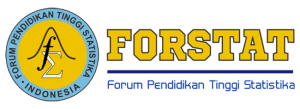Modeling Multi-Output Back-Propagation DNN for Forecasting Indonesian Export-Import
DOI:
https://doi.org/10.34123/jurnalasks.v16i1.459Keywords:
Multi-Output, Back-propagation, Deep Neural Network, Nowcasting, Ekspor-ImporAbstract
Introduction/Main Objectives: International trade through the mechanisms of exports and imports plays a significant role in the Indonesian economy, making the timely availability of export and import value data crucial. Background Problems: Export and import values are influenced by inflation and exchange rate factors. Novelty: This study identifies two categories of variables, namely output (export value and import value) and input (inflation rate and the exchange rate of the Rupiah against the US Dollar). Research Methods: the research approach utilizes a Multi-output Deep Neural Network (DNN) with a Back-propagation algorithm to model the input-output relationship. The method can provide forecasting results for two or more bivariate or multivariate output variables. Finding/Results: The modeling analysis results indicate that the optimal model network structure is DNN (3.4). This model successfully predicts output 1 (export value) and output 2 (import value) with Mean Absolute Percentage Error (MAPE) rates of 13.76% and 13.63%, respectively. Additionally, the forecasting results show predicted export and import values for November to be US$ 16,208.13 billion and US$ 15,105.33 billion, respectively. These findings offer important insights into the direction of Indonesia's international trade movement, which can serve as a basis for future economic decision-making.
Downloads
References
BPS. 2022. Produk Domestik Bruto Indonesia Menurut Pengeluaran, 2017-2021. Jakarta: BPS.
Chan, W.S. and Tong, H., 1986. On tests for non?linearity in time series analysis. Journal of forecasting, 5(4), pp.217-228.
Chang, Y.F., Lin, C.J., Chyan, J.M., Chen, I.M. and Chang, J.E., 2007. Multiple regression models for the lower heating value of municipal solid waste in Taiwan. Journal of environmental management, 85(4), pp.891-899.
Darmawan, I.B., Maimunah, M. and Whidiasih, R.N., 2018. Identifikasi Warna Kerabang Telur Ayam Ras Menggunakan Jaringan Syaraf Tiruan. PIKSEL: Penelitian Ilmu Komputer Sistem Embedded and Logic, 6(2), pp.189-200.
Mankiw, N. G. 2007. Makroekonomi, Edisi 6. Jakarta: Erlangga.
Hapsari, Dian Kusumo, dkk. 2020. Buka Lapangan Kerja, Kementan Genjot Ekspor. Suara.com.https://www.suara.com/bisnis/2020/11/27/142000/buka-lapangan-kerja-kementan-genjot-ekspor (Diakses 7 Desember, 2022).
Hochheiser, H. and Shneiderman, B., 2004. Dynamic query tools for time series data sets: timebox widgets for interactive exploration. Information Visualization, 3(1), pp.1-18.
Hofmann, D.A., 1997. An overview of the logic and rationale of hierarchical linear models. Journal of management, 23(6), pp.723-744.
Kementrian Koordinator Bidang Perekonomian. 2021. Terjaganya Pertumbuhan Ekonomi dan Terkendalinya Pandemi Covid-19 Menjadi Bukti Tepatnya Kebijakan dan Program Pemerintah. https://www.ekon.go.id/publikasi/detail/3388/terjaganya-pertumbuhan-ekonomi-dan-terkendalinya-pandemi-covid-19-menjadi-bukti-tepatnya-kebijakan-dan-program-pemerintah (Diakses 7 Desember, 2022).
Rofiyandi, M. Yandi. 2022. Impor Tak Selalu Buruk, Kenali Pengertian Impor dan Manfaatnya.Katadata.co.id. https://katadata.co.id/redaksi/ekonopedia/628effb0290ad/impor-tak-selalu-buruk-kenali-pengertian-impor-dan-manfaatnya#:~:text=Manfaat%20Impor&text=Mendapatkan%20pasokan%20bahan%20baku%20untuk,memenuhi%20permintaan%20di%20dalam%20negeri (Diakses 7 Desember, 2022).
Khair, U., Fahmi, H., Al Hakim, S. and Rahim, R., 2017, December. Forecasting error calculation with mean absolute deviation and mean absolute percentage error. In Journal of Physics: Conference Series (Vol. 930, No. 1, p. 012002). IOP Publishing.
Levenberg, K., 1944. A method for the solution of certain non-linear problems in least squares. Quarterly of applied mathematics, 2(2), pp.164-168.
Mishra, P. and Passos, D., 2022. Multi-output 1-dimensional convolutional neural networks for simultaneous prediction of different traits of fruit based on near-infrared spectroscopy. Postharvest Biology and Technology, 183, p.111741.
Neter, John, dkk. 1983. Applied Linear Regression Model. Richard D Irwin, Inc. 1983.
Prabowo, H., Suhartono, S. and Prastyo, D.D., 2020. The Performance of Ramsey Test, White Test and Terasvirta Test in Detecting Nonlinearity. Inferensi, 3(1), pp.1-12.
Pyndick, Robert. S. and Rubinfeld, Daniel L. 2009. Microeconomics, Seventh Edition. New Jersey: Pearson Education
Ren, L. and Glasure, Y., 2009. Applicability of the revised mean absolute percentage errors (MAPE) approach to some popular normal and non-normal independent time series. International Advances in Economic Research, 15(4), pp.409-420.
Rofiyandi, M. Yandi. 2022. Impor Tak Selalu Buruk, Kenali Pengertian Impor dan Manfaatnya.Katadata.co.id. https://katadata.co.id/redaksi/ekonopedia/628effb0290ad/impor-tak-selalu-buruk-kenali-pengertian-impor-dan-manfaatnya#:~:text=Manfaat%20Impor&text=Mendapatkan%20pasokan%20bahan%20baku%20untuk,memenuhi%20permintaan%20di%20dalam%20negeri (Diakses 7 Desember, 2022).
Rouss, V. and Charon, W., 2008. Multi-input and multi-output neural model of the mechanical nonlinear behaviour of a PEM fuel cell system. Journal of Power Sources, 175(1), pp.1-17.
Ró?ycki, P., Kolbusz, J. and Wilamowski, B.M., 2015, September. Dedicated deep neural network architectures and methods for their training. In 2015 IEEE 19th International Conference on Intelligent Engineering Systems (INES) (pp. 73-78). IEEE.
Samek, W. and Müller, K.R., 2019. Towards explainable artificial intelligence. In Explainable AI: interpreting, explaining and visualizing deep learning (pp. 5-22). Springer, Cham.
Setyorini, Bekti. 2018. Pengaruh nilai tukar terhadap ekspor dan jumlah uang beredar di Indonesia. FORUM EKONOMI, 20 (1) 2018, 1-11.
Silitonga, Ribka BR, dkk. 2017. Pengaruh ekspor, impor, dan inflasi terhadap nilai tukar rupiah di Indonesia. Jurnal Ekonomi Pembangunan. Vol. 15 (1): 53-59, Juni 2017.
Sutojo, T. "E. mulyanto, and V. suhartono, Kecerdasan buatan." Andi Offset (2011).
Teräsvirta, T., 1994. Testing linearity and modelling nonlinear time series. Kybernetika, 30(3), pp.319-330.
Tong, H., 2012. Threshold models in non-linear time series analysis (Vol. 21). Springer Science & Business Media.
Yokota, T., Gen, M. and Li, Y.X., 1996. Genetic algorithm for non-linear mixed integer programming problems and its applications. Computers & industrial engineering, 30(4), pp.905-917.
Ozsoydan, F., KANDEM?R, C. and Demirtas, E.Z.G.?., 2015. Neural-network-based genetic algorithm for optimal kitchen faucet styles. Neural Network World, 25(4).
Haviluddin, H., Arifin, Z., Kridalaksana, A.H. and Cahyadi, D., 2016. Prediksi Kedatangan Turis Asing ke Indonesia Menggunakan Backpropagation Neural Networks. Jurnal Teknologi dan Sistem Komputer, 4(4), pp.485-490.
Yamashita, R., Nishio, M., Do, R.K.G. and Togashi, K., 2018. Convolutional neural networks: an overview and application in radiology. Insights into imaging, 9(4), pp.611-629.















